In 1959, while visiting the Virginia Blue Ridge Railway (VBR) in Piney River, VA, Earle and his son, Earl, Jr. climbed into the cab of rusting VBR locomotive No. 6 that was parked on the “scrap track”, forlornly sleeping out her final days. Earle said to his son, “…this engine will never run again…” After taking several photos of the old locomotive, they left the property and made their way back to New Jersey. VBR No. 6 was originally built by the Baldwin Locomotive Works in November 1907 for the Southern Railway as their No. 385. The locomotive was a classic early-20th Century 2-8-0 “Consolidation” fast freight engine. It had come to the Virginia Blue Ridge in 1952 where she labored in local freight service for several more years before being retired.
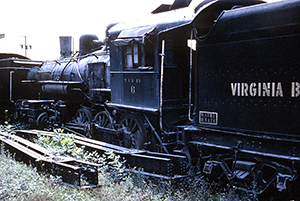
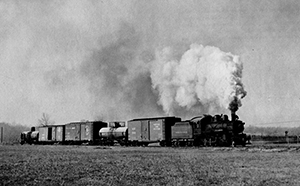
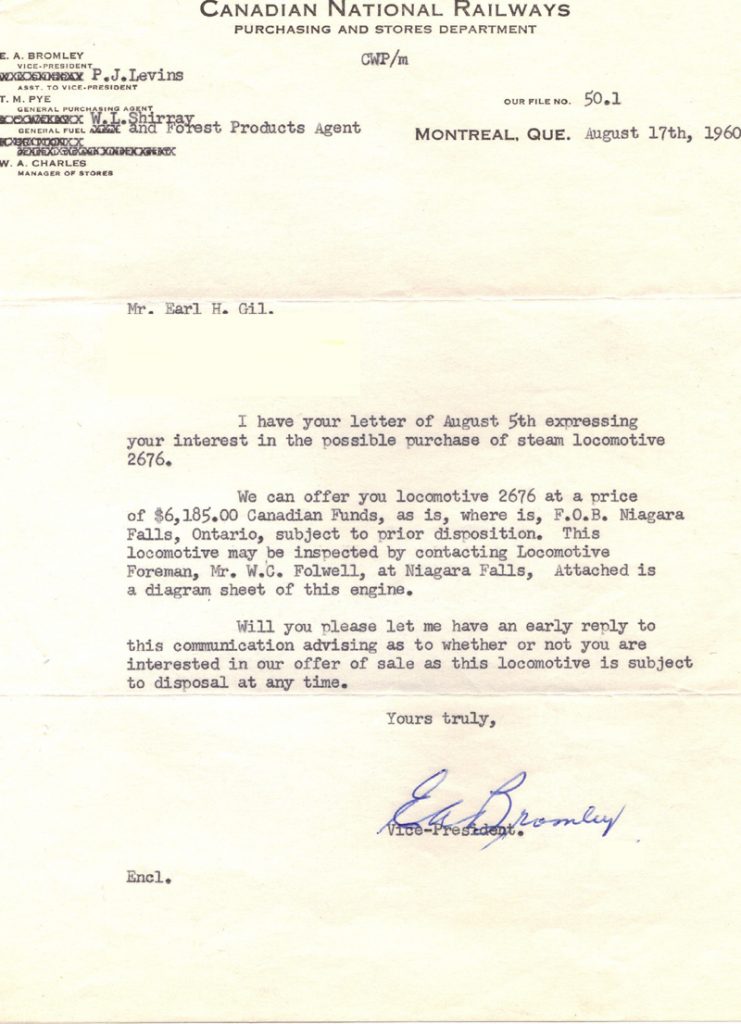
By the early 1960’s, with plans forming in his mind to begin his own steam-powered excursion line, Earle explored the possibility of purchasing a Canadian National 2-8-0 for $6,000. He also considered an Illinois Central 2-6-0, but held back since at the time, he had no place to operate a locomotive, or store one.
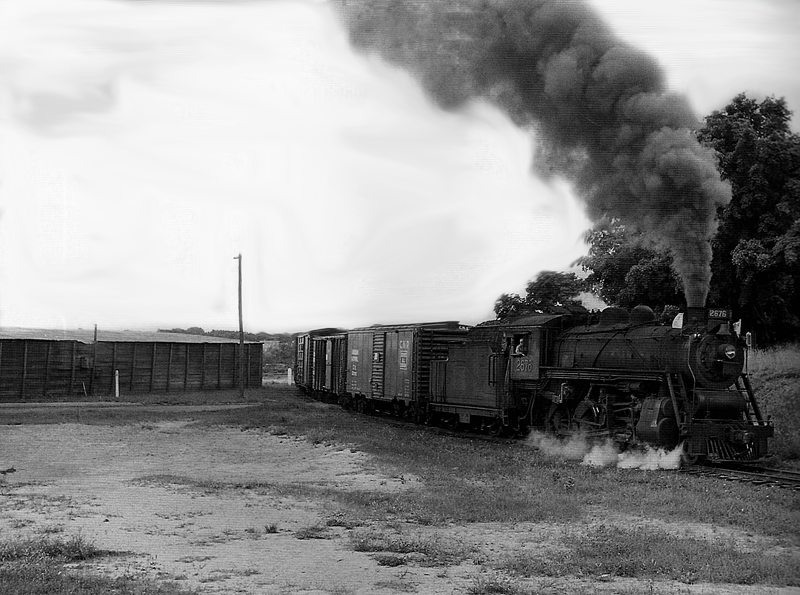
On a return trip to the Virginia Blue Ridge Railway early in 1963, Earle noted that No. 6 (385) was still on the property and had yet to be scrapped. Through the rust and decay, Earle saw a true American- built beauty, worthy of being saved and restored to operation. Earle eventually purchased the old locomotive and had it shipped to the Morristown & Erie Railroad at Morristown, NJ where he renumbered the engine back to its original “385”. Within three months of delivery, Earle had completely overhauled the locomotive (including the conversion from coal to oil firing), and on September 21, 1963, No. 385 was operating once again under its own steam. When the men of the Virginia Blue Ridge Railway saw the subsequent photographs of the restored 385, they could hardly believe that it was their Old No. 6 back in operation again. They were so impressed that for the next several years, the annual VBR Company calendar proudly featured their former engine operating “up North” on the Morris County Central.
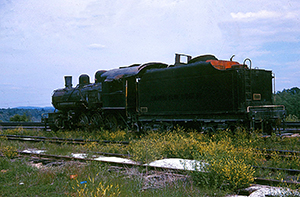
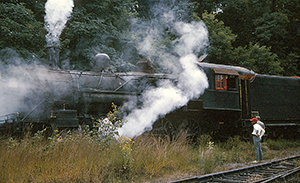
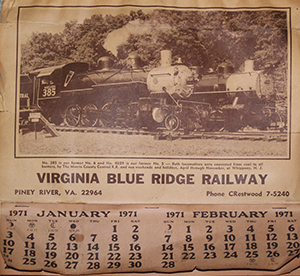
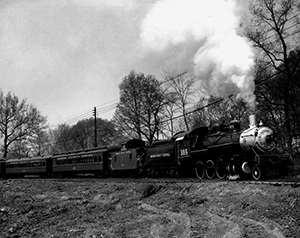
On May 9, 1965, No. 385 departed Whippany, bound for Morristown with the first trainload of revenue passengers on the Morris County Central Railroad. After a very successful first season, Earle returned to the Virginia Blue Ridge in late-1965 and purchased their locomotive No. 5, an 0-6-0 switching engine built by the American Locomotive Company in November 1942 as U.S. Army No. 4039.
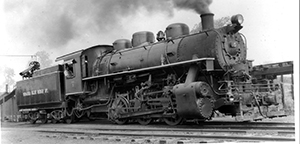
No. 4039 came to the VBR in 1947 and hauled freight until August 1963 when she too was retired. Earle renumbered his second locomotive back to its original “4039”. In the late-Summer of 1966 the “new” MCC locomotive was back in operation, working alongside No. 385, pulling passengers out of Whippany. The MCC’s reputation became established in Whippany as a wonderful place for people of all ages to visit. The clean, family-friendly atmosphere reflected Earle’s leadership and characteristics. With the assistance of his loyal crew of company directors, employees and volunteers, the Morris County Central continually grew, amassing a fine collection of locomotives and rolling stock. Each year, returning visitors would see something different at the site…whether a newly-acquired piece of equipment or some improvement to the property or in the type of entertainment provided to the public.
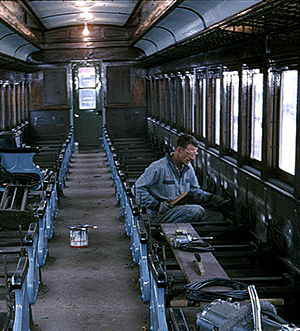
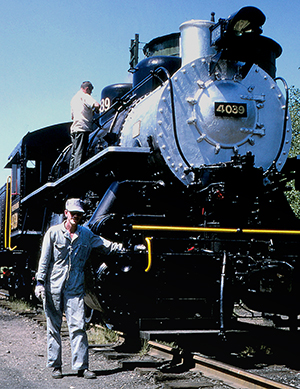
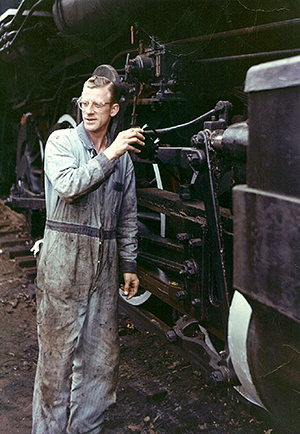
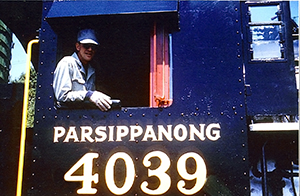
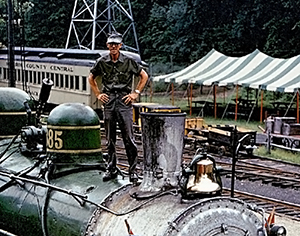
After nine years at the Whippany location, Earle and his company officers made the decision to relocate the entire operation 25 miles to the Northwest at Newfoundland, NJ on an unused (at the time) section of the New York, Susquehanna & Western Railroad. In December 1973, every piece of rolling stock owned by the MCC was prepared for the move and gathered together as one train. Engines 385 and 4039 were fired up and assisted diesels in leading the vintage collection of freight and passenger equipment over the Erie Lackawanna Railway and the Lehigh & Hudson River Railway to the new location. After a three-month Winter lay-over in Sparta, NJ, both steam locomotives powered the train over Sparta Mountain and down into Newfoundland. On July 4, 1974 the Morris County Central Railroad reopened to the public at the new location.
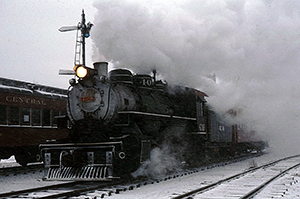
Though the future looked promising for the MCC at Newfoundland, the economics and the recurring gasoline shortages of the late-1970’s brought an end to the Morris County Central. Earle Gil’s dream and consuming passion ended its days as an operating railroad on December 14, 1980.
The MCC had come to a close, but Earle did not sit idle. He was a founder, Charter Member and Trustee of the Whippany Railway Museum, where he could be found on weekends, lending his talents and expertise. He was equally at home working onboard the train, conversing with passengers, selling tickets, or most of the time, busily working to restore or repair a car or engine in the the Museum’s collection.
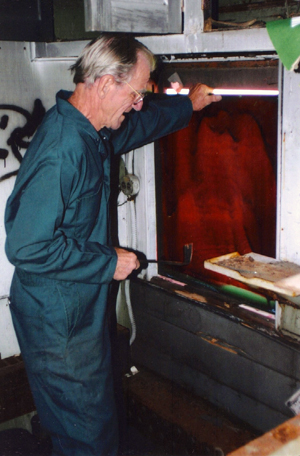
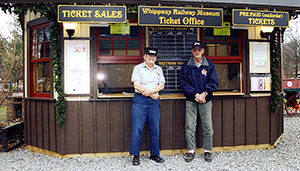
Extremely gifted, he was one of those individuals that could create nearly anything that he set his mind to. He became an expert at wood crafting and found the work relaxing and profitable…selling many of his creations at local craft shows and markets.
Earle could produce nearly any number of items from lumber. He built full-size, “four-poster” Victorian-style beds for friends and acquaintances…rebuilt sofas, chairs and other unique items…all in his fully-equipped home machine shop.
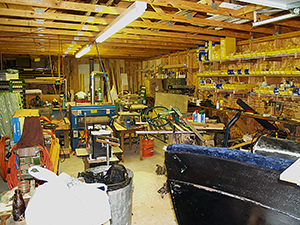
For the Museum, his talents were immeasurable. In late-2003, using early 20th Century diagrams from the Pennsylvania Railroad (PRR), Earle first built a recreation of a 1911 Railroad Crossing Watchbox. This was followed in 2004 by a wonderful replica of a 1905 PRR Scale House, which serves as the Museum’s Ticket Office. A reproduction of a 1909 PRR lineside Telephone Booth was also created in 2004. In September 2006, while in the midst of a grueling six-month round of chemotherapy and radiation treatments, Earle kept active by building a 20′ x 24′ garage for the Museum’s 1948 International Coal Delivery Truck. The garage perfectly compliments the Museum’s 1904 Freight House in style and construction.
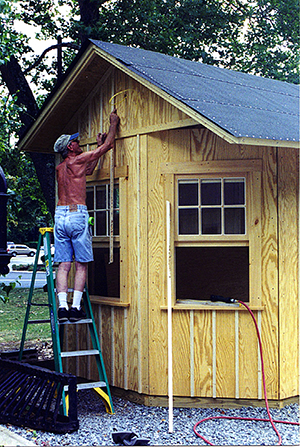
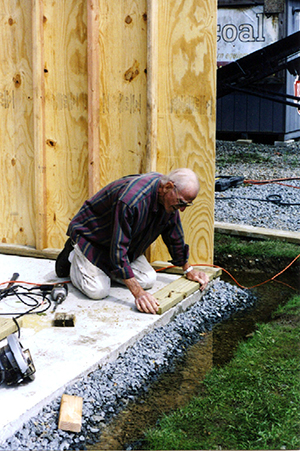
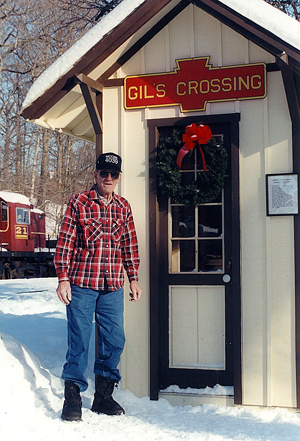
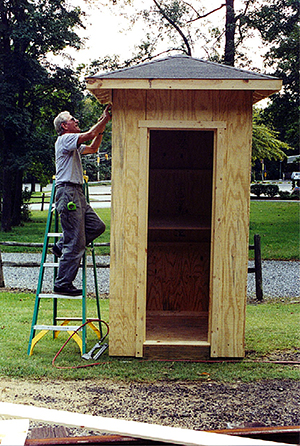
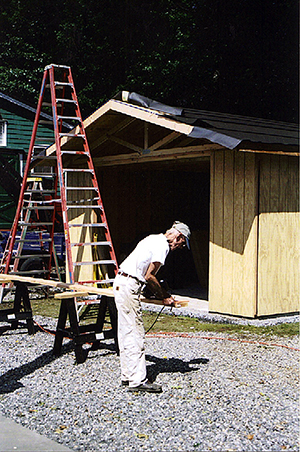
For the better part of 2004 – 2006, Earle led a group of capable volunteers in a renewed effort to complete the interior restoration of the wood work on the Museum’s former Central Railroad of New Jersey “Commuter Club Car” ‘Jersey Coast‘. This work involved finding the proper materials to match what remained of the original, but heavily-damaged inlaid-wood that is a feature of the car. Earle selected the types and grades of lumber required to replace what had been destroyed by vandals and the elements. Through Earle’s efforts, the other members of the restoration crew were able to follow behind him, and replicate the original 1927 interior paint and stain tints. All 40 window frames in the car were fashioned from mahogany by Earle in his home workshop.
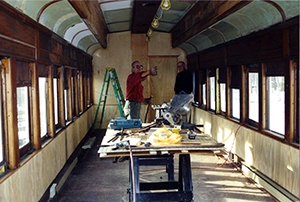
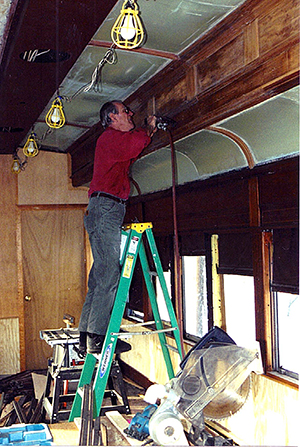
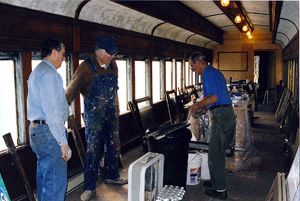
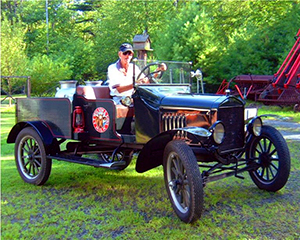
As if Earle’s passion for railroading were not enough, late in life he discovered yet another interest and started to amass a fine collection of vintage farm equipment, including tractors, Amish buggies, buck-board wagons and a restored, operating antique pick-up truck.
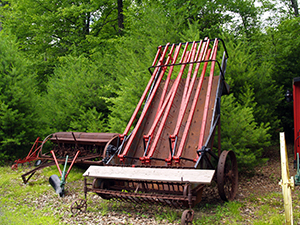
But it is the Morris County Central Railroad that will be his legacy. Though the Railroad and its creator are no longer with us, the MCC is remembered as a highly-respected example of what a conscientious group of individuals, led by a true visionary could accomplish. Armed with moderate resources and good taste, the MCC excelled in the efforts to preserve historic railroad equipment and present to the public a bit of bygone Americana.
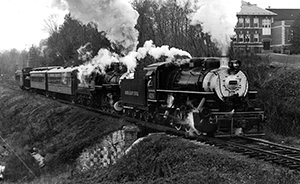
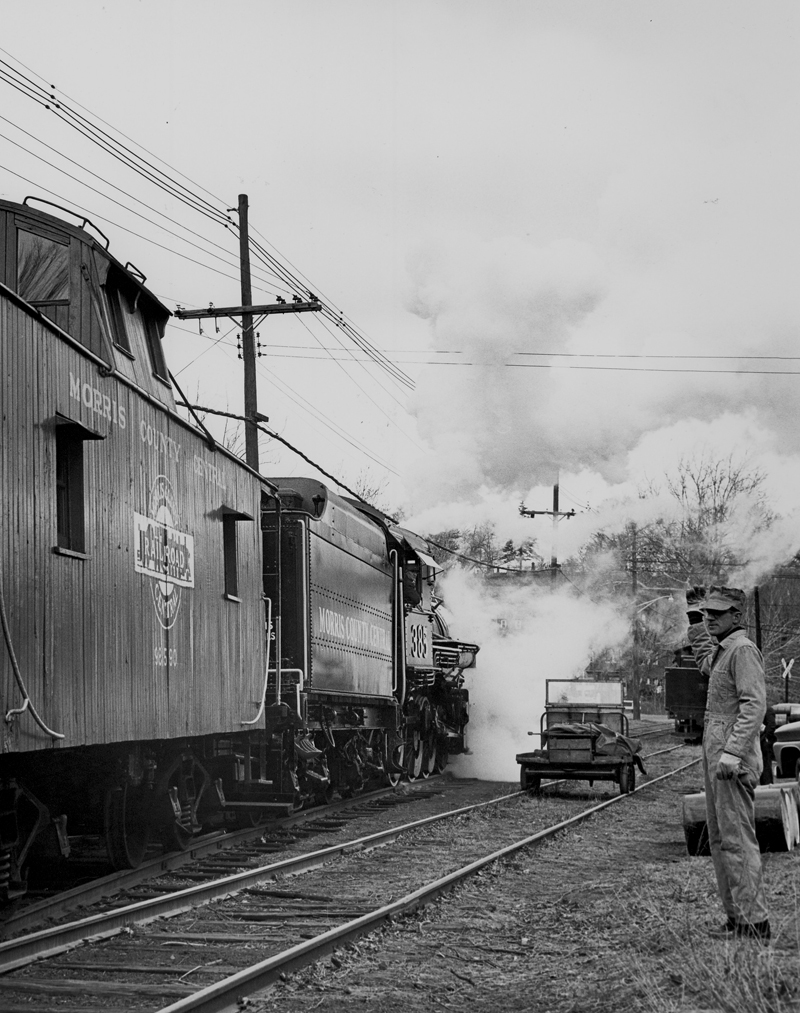
In the closing sequence of “The Rise and Fall of the Morris County Central Railroad”, Earle is once again featured, and gives his final thoughts and memories of the MCC:
“We did a lot of school work – Cub Scout work, Boy Scouts. So, there’s a lot of small kids that never rode a train or much less saw one that finally were able to have that happen to them. It kind of chokes me up a little bit…”
(there is a slight pause as Earle collects himself, but then comes on strong as he finishes his thought)
“It’s a part of Americana, and if you don’t have people that are willing to take a chance and do it – work on a dream – then nothing would ever happen.”